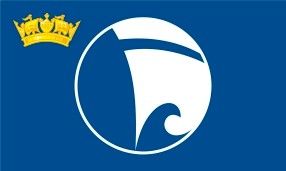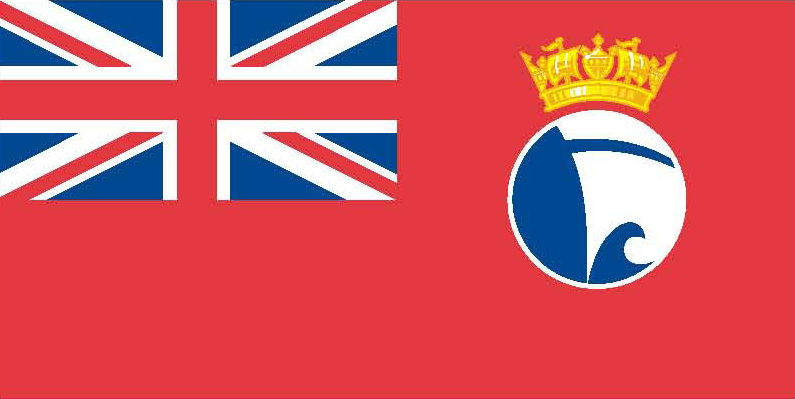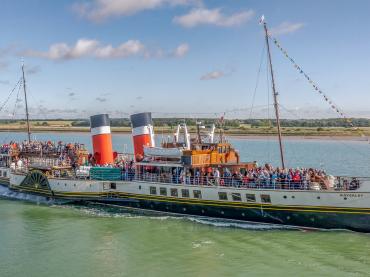Details
Construction
Dimensions
History
MEDWAY QUEEN was built for the New Medway Steam Packet Co. Ltd by Ailsa Shipyard, Troon (who also built her engines) and launched on 23 April 1924. Her design was based on the Ailsa-built BOURNEMOUTH QUEEN of 1908.
After trials on the Clyde, she sailed to Rochester to replace the company's PRINCESS OF WALES and joined their other paddler, CITY OF ROCHESTER, operating from Strood and Sun Pier, Chatham. In 1936, the New Medway company was taken over by the General Steam Navigation Company (GSN) but New Medway kept its name, identity and livery of black hull, white promenade deck sides and cream funnel emblazoned with the company badge. MEDWAY QUEEN was present at the Coronation Review of the Fleet at Spithead 1937 where she ran an excursion for a pre-booked party.
In 1938, she was converted from coal to oil-fired steaming by the Wallsend Slipway & Engineering Company although the work was done in Chatham. In 1939, she carried children who were evacuated from Kent to East Anglia, before being requisitioned by the Admiralty on 9 September for war service as a minesweeper. Her conversion to that role was carried out at the GSN Yard at Deptford Creek. A 12-pounder gun was fitted on the forecastle and a Hotchkiss gun was mounted on each paddle-box. Minesweeping gear was fitted aft and an enclosed bridge cabin was constructed. Repainted grey, she hoisted the White Ensign as HMS MEDWAY QUEEN and displayed the pennant J48. After trials she went to Chatham Dockyard for adjustments. At first, she was based at Harwich and carried out daily sweeps of the Thames and Medway estuaries. She was then transferred to Dover to join the 10th Minesweeping Flotilla patrolling the Dover Straits.
On 28th May 1940, HMS MEDWAY QUEEN was anchored off the South Coast, spotting enemy aircraft laying mines, when she was ordered to proceed to Dunkirk to assist in the evacuation of the British Expeditionary Force from the beaches and was one of the first ships to arrive on the scene. As the ship returned to Dover with her first load of troops, she was attacked by German fighter planes and her machine-guns downed one of them. She came upon the sinking paddler HMS Brighton Belle, which had hit a submerged wreck, and rescued all her crew and survivors. On the following day, MEDWAY QUEEN entered Dunkirk harbour amid heavy gunfire. Another full load of troops was embarked and the ship returned to Ramsgate. In all, she made seven trips between 27 May and 3 June and rescued about 7,000 men. Seven awards for gallantry were gained by her crew and three enemy aircraft were shot down.
On the last trip, the starboard paddle-box was badly damaged by a ship that had hauled up alongside after being hit by shells, but MEDWAY QUEEN managed to limp back to Dover Harbour and had to be repaired at Chatham Dockyard. For her part in this massive operation, she was awarded the battle honour 'Dunkirk (Operation DYNAMO) 1940'. After Dynamo, Medway Queen and other ships of the flotilla were refitted in Portsmouth. Later in 1940 Medway Queen was transferred to the 8th minesweeping flotilla on the east coast and January 1943 MEDWAY QUEEN became a minesweeping training ship based in Granton, Edinburgh until being returned by the Admiralty to her owners in January 1946.
A refit by Thornycroft at Southampton followed and she returned to the excursion trade in 1947. Her regular itinerary started at Strood, with calls at Chatham (until 1959) and Sheerness (until 1954), and onward to Southend and either Clacton or Herne Bay. In June 1953, she was in the official line-up at the Coronation Review of the Fleet at Spithead. After seventeen post-war seasons, she made her last sailing on 8 September 1963.
In January 1964, she was towed to the East India Dock, London, and initial preservation attempts were made. In the event, she was sold to become a marina clubhouse on the River Medina, Isle of Wight, was towed there in January 1965 and opened in her new role on 14 May 1966. She was also in use as a nightclub and was joined by the paddle steamer RYDE. By the mid 1970s Medway Queen was derelict although Ryde continued in business. In 1984, she was sold and moved back to the Medway on a pontoon and berthed at St Mary's Wharf, Chatham. Shortly afterwards, the MEDWAY QUEEN Preservation Society was formed.
The vessel sank at her moorings before being towed, on 1 November 1987, to Damhead Creek, Kingsnorth on the Hoo Peninsula. Eventually, a solution to restore the ship to full working condition was arrived at. The hull had deteriorated beyond repair, so the ship was dismantled to salvage the engines, paddles, and other equipment, the other funnel, paddle-boxes and some decking. All this was to be reconditioned and installed in a new hull, the latter being funded through a £1.86m grant from the Heritage Lottery Fund, announced in 2006.
Source: Paul Brown, Historic Ships The Survivors (Amberley, 2010), updated Mar 2011.
Richard Halton, The Medway Queen, (Noodle Books 2013)
Documents held by the naval museums in Chatham and Portsmouth
Key dates
-
1924
Built in Troon, Scotland for service on the River Medway and the Thames Estuary
-
1924-1939
Operated as part of the Queen Fleet of the New Medway Steam Packet Co. based at Rochester
-
1937
Attended the Spithead Review
-
1938
Converted from coal to oil by the Wallsend Slipway & Engineering Company
-
1939
Carried evacuees before being requisitioned by the Admiralty for use as a minesweeper
-
1940
Ordered to proceed to Dunkirk to assist in the evacuation of the BEF. In all she made seven trips, rescuing some 7,000 men
-
1943
Became a minesweeping training ship
-
1946
Returned to her owners by the Admiralty
-
1947-1963
Resumed excursion trade after an extensive refit at Thorneycroft, Southampton
-
1953
Took part in the Spithead Coronation Review
-
1963
Taken out of service
-
1964
Towed to the East India Dock, London, and initial preservation attempts were made before vessel was sold for use as a marina clubhouse on the River Medina, Isle of Wight
-
1966
Opened in her new role and was also used as a night club before being replaced by the paddle steamer RYDE and falling derelict
-
1984
Sold and moved back to the Medway on a pontoon and berthed at St Mary's Wharf, Chatham. Shortly afterwards, the Medway Queen Preservation Society was formed. The vessel sank at her moorings.
-
1987
Towed to Damhead Creek, Kingsnorth on the Hoo Peninsula and subsequently dismantled as part of a reconstruction project
-
2006
Awarded a grant of £1.86m from the Heritage Lottery Fund to build a new hull
-
2008
Contract signed for the rebuild
-
2009
Ceremony held to mark the unveiling of the keel
-
2012
Vessel being refitted in Bristol but due to move to Gillingham Pier later in the year to take advantage of an EU grant of 1m Euros
-
2013
Returns to Gillingham, after undergoing 5 years of restoration in Bristol
-
2020
Regional Flagship SE for NHS-UK
Grants
-
2020
Received Flagship award of £250, for being NHS-UK flagship 2020
-
2013
A grant of £40,00 was given towards an apprenticeship scheme by The Headley Trust
-
2014
A grant of £5,000 was given towards the refitting of the engine room by The Headley Trust
-
2014-2015
The Heritage Lottery Fund awarded £100,000 for Transformation Project
-
2009-10
The Heritage Lottery Fund awarded £9,900 for filming on the re-build
-
2006-2007
The Heritage Lottery Fund awarded £1,861,000 for restoration project
-
2005-2006
The Heritage Lottery Fund awarded £35,900 for planning towards a restoration project
Sources
Brouwer, Norman J, International Register of Historic Ships, Anthony Nelson, pp162, Edition 2, 1993
Ships Monthly: Medway Queen Preservation, September 1985
Plummer, Russell, Ships Monthly: Future of the 'Medway Queen', July 1995
Steamboat Register: An illustrated Register of surviving steam vessels in the British Isles, Steam Boat Association of Great Britain, Edition 6, May 1994
Brann, Christian, The Little Ships of Dunkirk: 1940-1990, Collectors Books Ltd, 1989
Classic Boat: Bristol - Engine returns to Medway Queen, October 2012
Classic Boat: The Little Ships Prepare to Revisit Dunkirk, May 2015
Transport Digest: New paddler takes shape, Edition 103, Summer 2011
Vine, M R, Warship World: HMS Medway Queen - Heroine of Dunkirk, pp21-22, Summer, 1990
Own this vessel?
If you are the owner of this vessel and would like to provide more details or updated information, please contact info@nationalhistoricships.org.uk


































